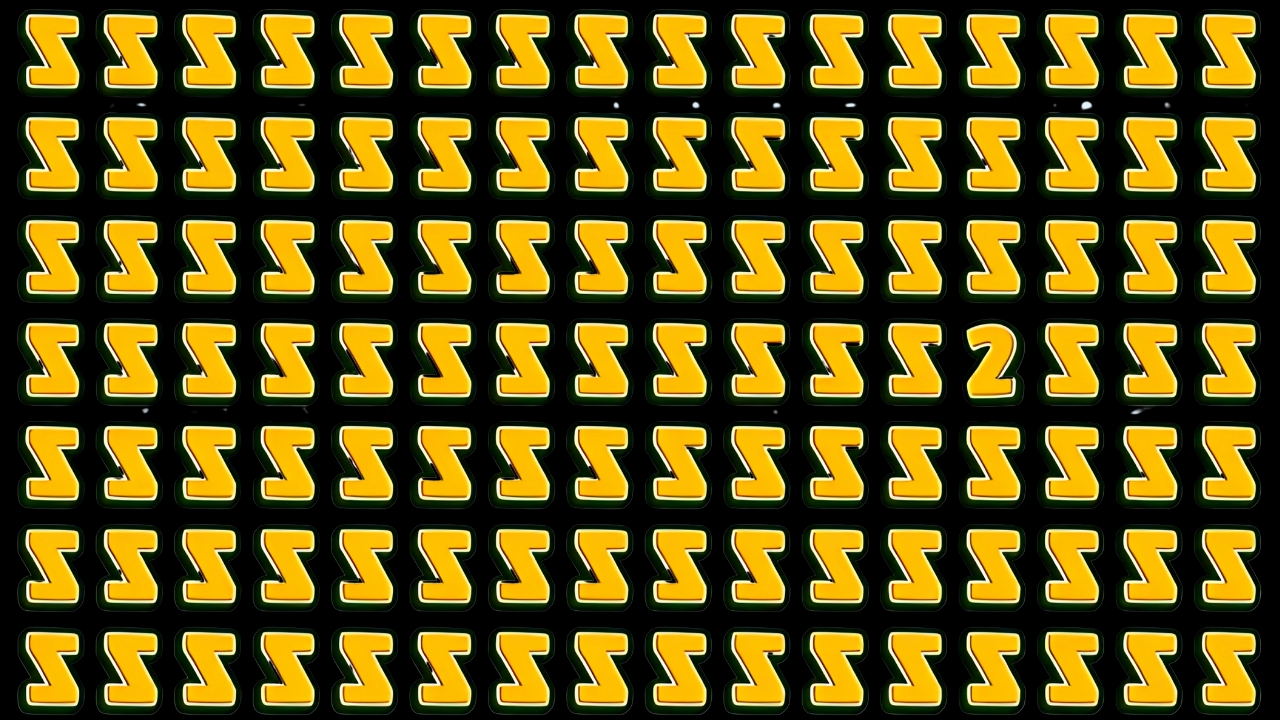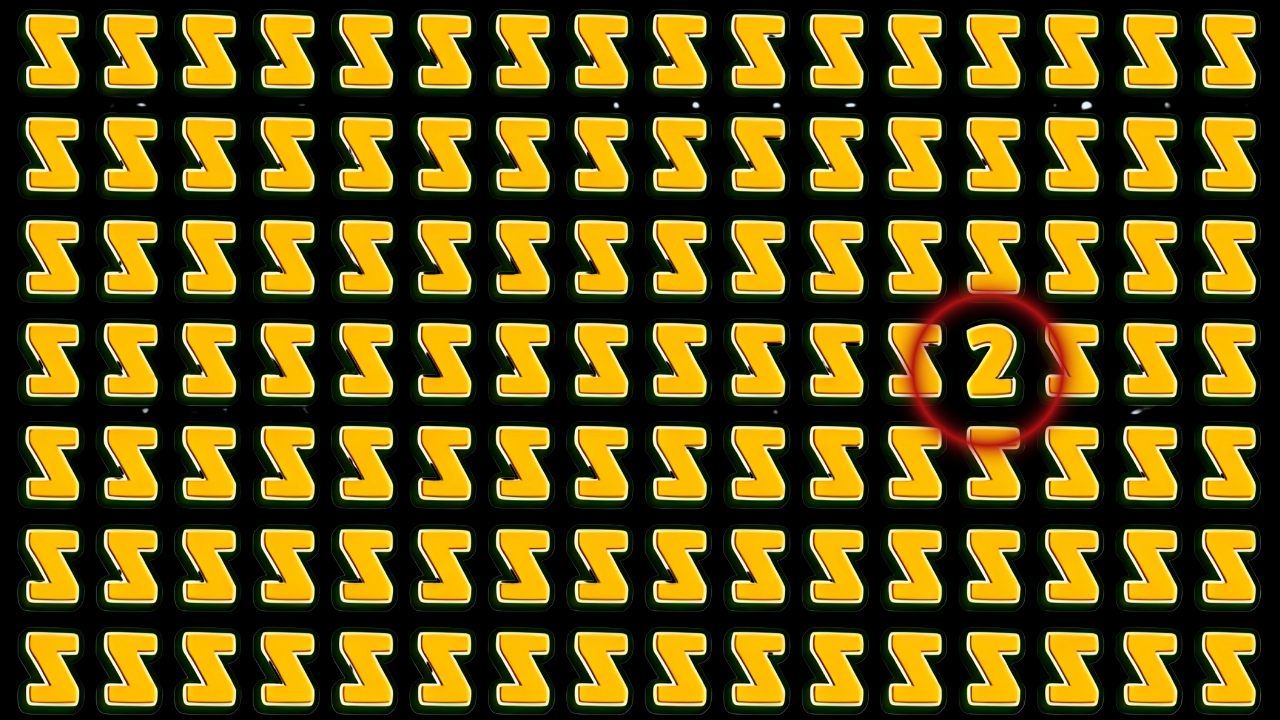Hidden Numbers 2 : Have you ever stared at what seems like a simple pattern of letters, only to discover there’s something cleverly hidden right in front of your eyes? That’s exactly what happens when you’re challenged to spot a number 2 hiding among a sea of inverted Z characters. These visual puzzles aren’t just entertaining time-killers – they’re fascinating windows into how our brains process visual information.
What Makes These Puzzles So Compelling?
When you first glance at a grid filled with inverted Z shapes, everything looks uniform. Your brain quickly categorizes what it sees as “all the same thing” and moves on. But somewhere in that visual chaos, a sneaky number 2 is waiting to be discovered. The challenge lies in training your eyes to slow down and really examine each character individually.
Think of it like being in a crowded room where everyone’s wearing similar clothing, but you need to find one person wearing a slightly different shade. Your brain naturally groups similar things together for efficiency, which works great most of the time but makes these hidden object puzzles particularly tricky.
The Science Behind Why We Miss the Obvious

Your visual system is incredibly sophisticated, processing millions of bits of information every second. To handle this massive workload, your brain takes shortcuts. When it encounters repetitive patterns, it essentially says, “I’ve seen this before, moving on.” This process, called visual pattern recognition, is why you can quickly scan a page of text without getting bogged down examining every single letter.
But this efficiency becomes a challenge when something slightly different is camouflaged within the pattern. The number 2 and an inverted Z share enough visual similarities that your brain might initially classify them as the same thing. Both have angular lines, similar proportions, and comparable visual weight.
Strategies That Actually Work
Instead of randomly scanning the image hoping to stumble upon the hidden number, try a more systematic approach. Start by dividing the image into smaller sections – maybe quarters or even smaller grids. Focus on one section at a time, examining each character carefully before moving to the next area.
Another effective technique involves changing your scanning pattern. Most people naturally read from left to right, top to bottom. Try scanning from right to left, or start from the bottom and work your way up. Sometimes shifting your approach can help you notice details your brain filtered out during the first pass.
Pay attention to subtle differences in shape and orientation. While an inverted Z and the number 2 might seem similar at first glance, they have distinct characteristics. The number 2 typically has more curved elements, while inverted Z characters maintain their angular structure throughout.
Why These Puzzles Are More Than Just Fun
Engaging with visual puzzles like this one offers genuine cognitive benefits. They exercise your attention to detail, improve your ability to focus on specific visual elements, and enhance your pattern recognition skills. Regular practice with these types of challenges can even improve your observational abilities in everyday situations.
These puzzles also provide a healthy break from screen-heavy activities that don’t require deep visual processing. When you’re actively searching for hidden elements, you’re giving your brain a different type of workout than scrolling through social media or watching videos.
The Psychology of the “Aha!” Moment
There’s something incredibly satisfying about finally spotting that hidden number 2. Scientists call this the “eureka effect” – that sudden moment when the solution becomes clear. Your brain releases a small dose of dopamine, the same neurotransmitter associated with other rewarding experiences.
This neurological reward system explains why these puzzles can be somewhat addictive. Once you experience that satisfaction of finding the hidden element, your brain wants to recreate that feeling. It’s the same mechanism that makes puzzle games, crosswords, and similar challenges so engaging.
Tips for Improving Your Visual Detection Skills
If you want to get better at these types of challenges, practice with different variations. Look for puzzles that hide different shapes, numbers, or letters within similar patterns. Each variation trains your brain to recognize different types of visual distinctions.
Consider adjusting your physical relationship to the image as well. Sometimes sitting farther back helps you see patterns more clearly, while other times getting closer allows you to examine individual elements more carefully. Try both approaches and see what works better for your visual processing style.
Take breaks if you feel frustrated. Your brain often continues working on visual problems subconsciously, and sometimes the answer becomes clear when you return with fresh eyes. This phenomenon, called the incubation effect, is well-documented in cognitive psychology research.
The Broader World of Visual Perception
These optical illusions connect to broader questions about how we perceive reality. What we “see” isn’t just what hits our retinas – it’s heavily influenced by our brain’s interpretation of that visual data. These puzzles highlight how our cognitive shortcuts, while generally helpful, can sometimes cause us to miss important details.
Understanding these limitations can make you more aware of how your perception works in other contexts. Whether you’re proofreading an important document, looking for items in a cluttered space, or trying to spot wildlife in nature, knowing how your visual system processes information can help you be more effective.
Optical illusion Answer

Next time you encounter one of these hidden number challenges, approach it with patience and curiosity rather than frustration. Remember that the difficulty is intentional – if the hidden element were easy to spot, it wouldn’t be much of a puzzle.
Try timing yourself on different attempts to see if your speed improves with practice. Many people find they get faster at spotting hidden elements as they develop better visual scanning strategies and learn to recognize the subtle differences between similar characters.
These visual puzzles represent a perfect blend of entertainment and cognitive exercise. They challenge your perception, reward your persistence, and offer insights into the fascinating ways your brain processes visual information. So the next time you’re faced with finding that sneaky number 2 among the inverted Zs, remember – you’re not just solving a puzzle, you’re exploring the remarkable capabilities of human vision and cognition.